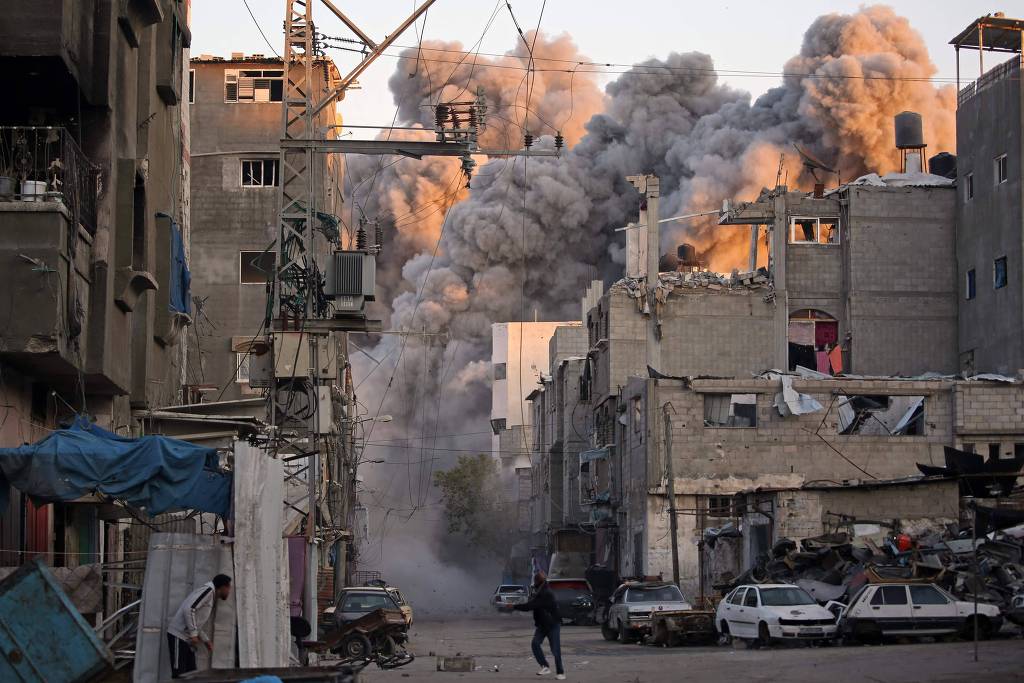
Published 01/14/2025 11:16 | Edited 01/14/2025 11:33
Negotiations for a ceasefire between Israel and Hamas advanced this Tuesday (14), with representatives of the parties meeting in Doha, Qatar. The agreement is “in its final details”, according to officials involved, and could end 15 months of a conflict that devastated Gaza and left more than 46,000 Palestinians dead.
Despite international optimism, Israeli attacks have intensified in the last 36 hours, killing at least 70 people in the enclave. Among the victims, according to local medical reports, are women and children, hit in bombings on residential areas.
The President of the United States, Joe Biden, stated on Monday (13) that the ceasefire is “on the verge” of being implemented. President-elect Donald Trump has declared that the agreement could be finalized before his inauguration on January 20. Both sent special envoys to the negotiations: Brett McGurk, for Biden, and Steve Witkoff, for Trump.
“Agreement would free hostages, stop the fighting, provide security for Israel and significantly increase humanitarian assistance to the Palestinians, who have suffered terribly in this war started by Hamas,” Biden said in a speech.
Main points of the agreement
The draft pact foresees three stages. In the first, Hamas would release 33 hostages, including women, children and men over 50, while Israel would release Palestinian prisoners proportionately. Israeli troops would begin to gradually withdraw from Gaza, but would maintain a buffer zone along the border with Egypt.
The second phase, scheduled for the 16th day of the ceasefire, would include the release of remaining hostages and the return of bodies. The third phase would focus on rebuilding Gaza, with the entry of materials and humanitarian relief.
However, critical points remain pending. Israel insists on maintaining a military presence in the Philadelphia corridor, while Hamas demands the complete withdrawal of Israeli forces. Additionally, Palestinian prisoners considered “high-profile terrorists” would be sent to Gaza or countries such as Egypt and Qatar, but not the West Bank.
Skepticism and pressure
Although leaders of Hamas and Israel have expressed optimism, Gazans and political analysts are skeptical. “This war should have ended a long time ago,” said Majed al-Ansari, spokesman for the Qatari government, which mediated the negotiations.
In Israel, the agreement faces resistance from the far right, part of Prime Minister Benjamin Netanyahu’s coalition. Ministers such as Itamar Ben-Gvir and Bezalel Smotrich classified the pact as a “catastrophe for national security”. Protests are also taking place in Tel Aviv, where families of hostages are calling for the immediate release of their loved ones.
Netanyahu, under pressure from Biden and Trump, is trying to balance external and internal demands as he seeks to consolidate his political position. Analysts point out that negotiating a ceasefire is essential for its political survival amid criticism of the prolongation of the war.
Humanitarian impact and reconstruction
The war left more than 100,000 Palestinians injured, displaced nearly 2 million people and destroyed Gaza’s infrastructure. The human cost is considered “unsustainable”, according to humanitarian organizations.
Experts emphasize that, even with the ceasefire, stability in the region depends on a long-term commitment to resolve the roots of the conflict, such as the end of the Israeli occupation and the Palestinian right to self-determination.
While the world anxiously awaits the outcome of the negotiations, the urgency remains to prevent further deaths and guarantee humanitarian relief for the Palestinian people, victims of a disproportionate and devastating war.
Source: vermelho.org.br

